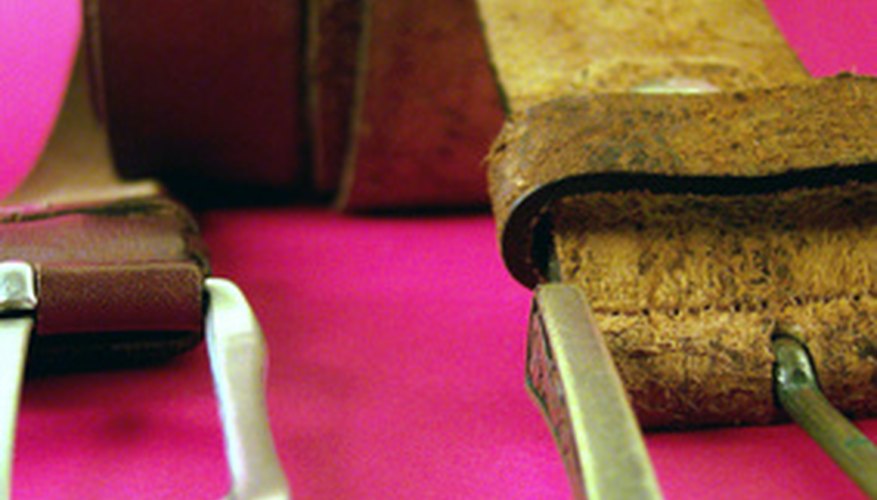Faux leather is a general term used to refer to several different types of artificial leather. Early versions of faux leather only slightly imitated the look and feel of real leather. Modern faux leather can be made to be virtually identical to real leather in every way depending on the quality. For even more authentic-looking fabric, distressing the material can give it a realistic, worn and weathered look.
Form folds and creases in the material. Worn leather can accumulate deep creases through repeated usage. Replicate this repeated usage by bending and folding the material roughly. Ball it up when not being worn and keep it in a drawer or other confined space. A few creases in the faux leather will give it the look of well worn real leather.
- Faux leather is a general term used to refer to several different types of artificial leather.
- A few creases in the faux leather will give it the look of well worn real leather.
Create wear spots on the material. Look for spots on the material that would naturally get rubbed against often such as the elbows in shirts, knees in trousers or toes in shoes. Try to find existing wear spots that may be already have begun forming as this will give you a very natural and realistic look. Lightly rub the desired locations with different grades of sandpaper or steel wool.
Fabricate heavier areas of distress if desired. Leather garments tend to wear out around edges, such as on sleeves of a jacket or the cuffs of trousers. Use a wire brush (the same kind you'd use to prep a wall for painting) while pulling the material taute to create areas with more severe wearing.
- Create wear spots on the material.
- Use a wire brush (the same kind you'd use to prep a wall for painting) while pulling the material taute to create areas with more severe wearing.
Expose the faux leather to dirt and dust if a more outdoorsy look is desired. Take the item outside and roll it around in the dirt. Mud may make the material too dirty so you might want to avoid it. A little dust can make the faux leather appear less synthetic and give it a realistic and earthy look.
- Expose the faux leather to dirt and dust if a more outdoorsy look is desired.
Use the item constantly. If the faux leather is an item of clothing, wear it as often as possible. The most realistic wear and tear comes naturally. In addition to creating artificial wear spots and creases, you can speed natural process along just by using the item constantly. Being rough to the faux leather while wearing it, such as rubbing it up against trees and concrete walls, will give the material a worn look too.
WARNING
Start small and work your way up to the desired effect. The durability of the faux leather will depend on the quality of the material. While some types of faux leather have the same durability of real leather, cheaper versions may tear easily. Be gentle on the material at first until you see how well the faux takes the distressing. Be subtle -- small touches can often be more convincing then large drastic changes.
